Pisa to Naples – 550 km (train) & 12,391 Fit Bit steps
3 days – 46,717 Fit Bit steps
Even, or perhaps especially, after the restorative peace of the Cinque Terre, we were not prepared for the assault of Naples, which was to serve as a base for visiting Pompeii and other sights south of the city. We had booked an Airbnb in the middle of the vibrant chaotic old town. As one travel writer noted,
“No one would accuse the centro storico, the old historical centre, of being pretty, but she is darkly and ravishingly beautiful. She is also raw, passionate, secretive, generous, dilapidated, glorious, vibrant, and unabashedly corrupt and corrupting.”
The entry to our apartment was through a courtyard behind a huge wrought iron gate off a narrow dark cobblestone alleyway. Inside, we found a bright and modern flat with stone door frames and vaulted ceilings, located on the first floor of a 15th C building. Likewise, behind small doorways on the littered narrow streets with their graffitied walls, were smart coffee shops, pasticcerias, restaurants and clothes shops. Our morning espresso stops favoured Leonardo’s, whose traditional pastry, sfogliatelle, was exceptional.
A highlight of the city was a visit to the Cappella Sansevero, with its breathtaking marble sculpture of a veiled body of Christ by Giuseppe Sanmartino, one of the most stunning works we have seen.
Gino Sorbillo’s pizza, recommended by Lonely Planet was an experience, not only for the perfect Neapolitan pizza, for which we lined up outside with dozens of others, and the story behind his elevating the reputation of the dish, but also his refusal to bow to the demands of “organized crime”. In 2015, Naples was reported as being a city people do not want to visit, partly because of a history of poor infrastructure and services. In addition, there are stories of the local mafia dumping tons of toxic waste, for profit, in surrounding communities for years. The adverse consequences are more than anecdotal.
Coffee notes: all the espresso that we drank in Naples (Caffé Kenon, Caffé Partenope and Caffé del Rei) was good but had a slightly powdery (?Turkish) taste. Apparently it is usually taken with sugar, which perhaps makes a middle eastern connection more likely. Given that it was less bitter than we prefer, the overall score was 8.25/ 10.
The main purpose for our stay in Naples was to visit the ruins of Pompeii and Herculaneum and to see the crater of Vesuvius, the eruption from which in 79 AD completely buried these two Roman cities under 10 metres of volcanic ash and mud. Not discovered until the 18th C and only properly partially excavated in the 20th C (most of Herculaneum remains buried under the present city of Ercolano and excavations in Pompeii were discontinued in the 1980’s for cost reasons), the cities were nearly perfectly preserved under calcified layers of ash, providing a fascinating glimpse into life in the early Roman period. Assisted by very able guides we explored both sites, walking down stone streets where the ruts made from chariots were evident, peering into shops still containing terracotta urns from which were sold items such as wine, olives and grains, and wandering through houses and public baths with plaster and frescoes still apparent on the walls, mosaic floors, remains of marble furniture, lead piped water and sewage systems, fountains, and even political campaign graffiti painted on an outside wall. The excavations of Pompeii have uncovered two theatres and an amphitheatre.
The presence of plaster casts of victims in Pompeii and plastic replicas of skeletons in Herculaneum was chilling. (As excavators in the mid 1800’s continued to uncover human remains, they noticed that the skeletons were surrounded by voids in the compacted ash. By carefully pouring plaster of Paris into the spaces, the final poses, clothing, and faces of the last residents of Pompeii came to life.) For those who were unable to escape, death from the hot gases was very rapid.
We saw examples of carbonized grains, lentils, olives and fruit and, in Herculaneum, wooden beams, doors, shutters and furniture carbonized so quickly they remained in place. Many artifacts and frescoes had been removed from both sites to museums, or looted, in earlier times.


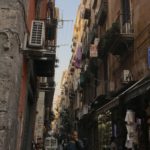
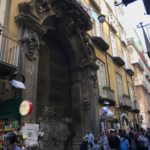


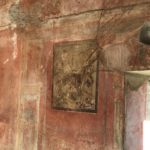
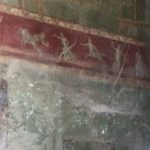
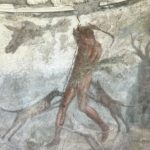

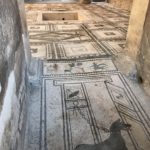
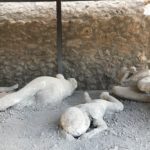


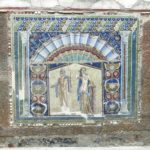

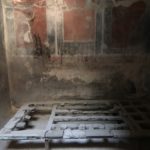


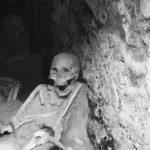
Amazing photos!!